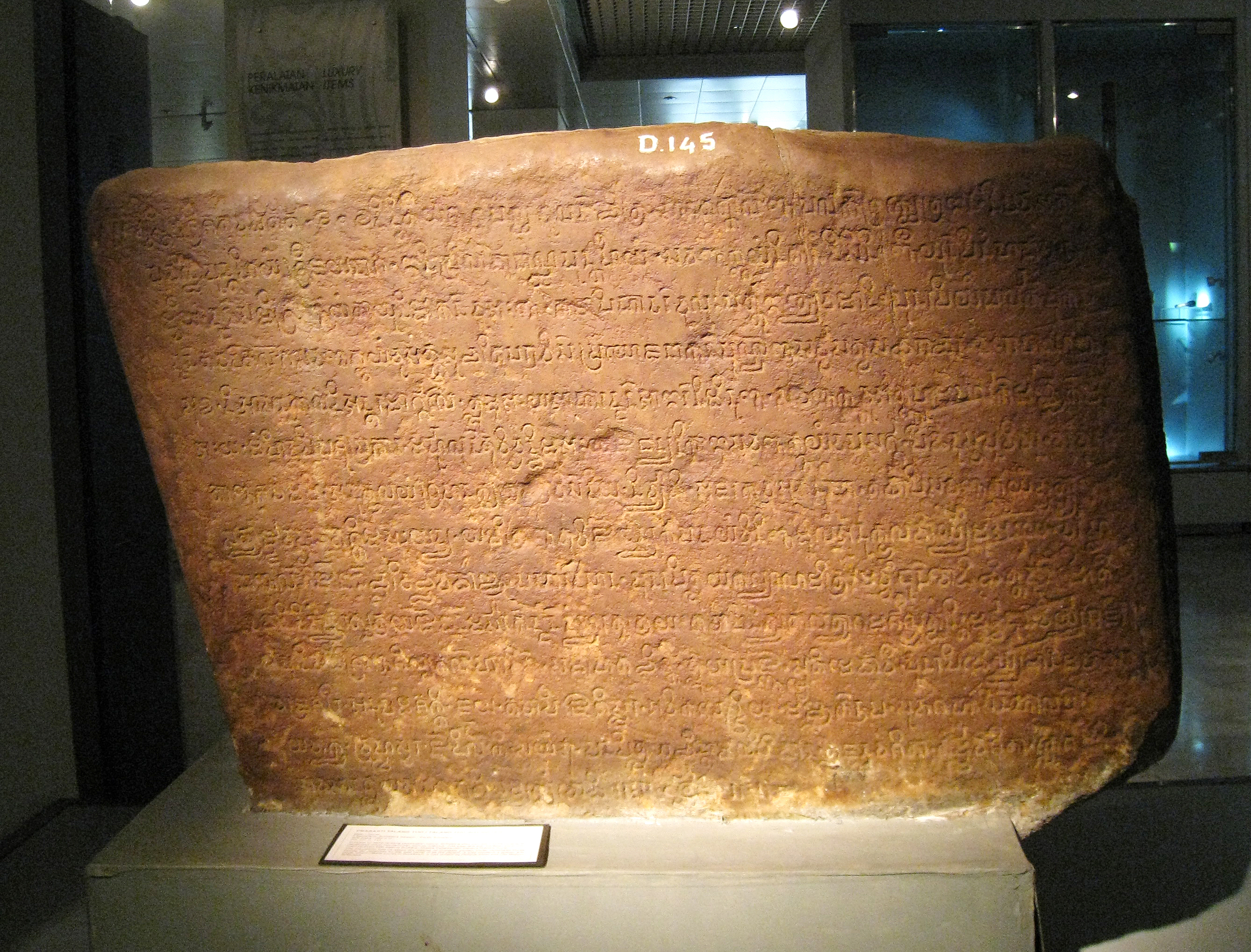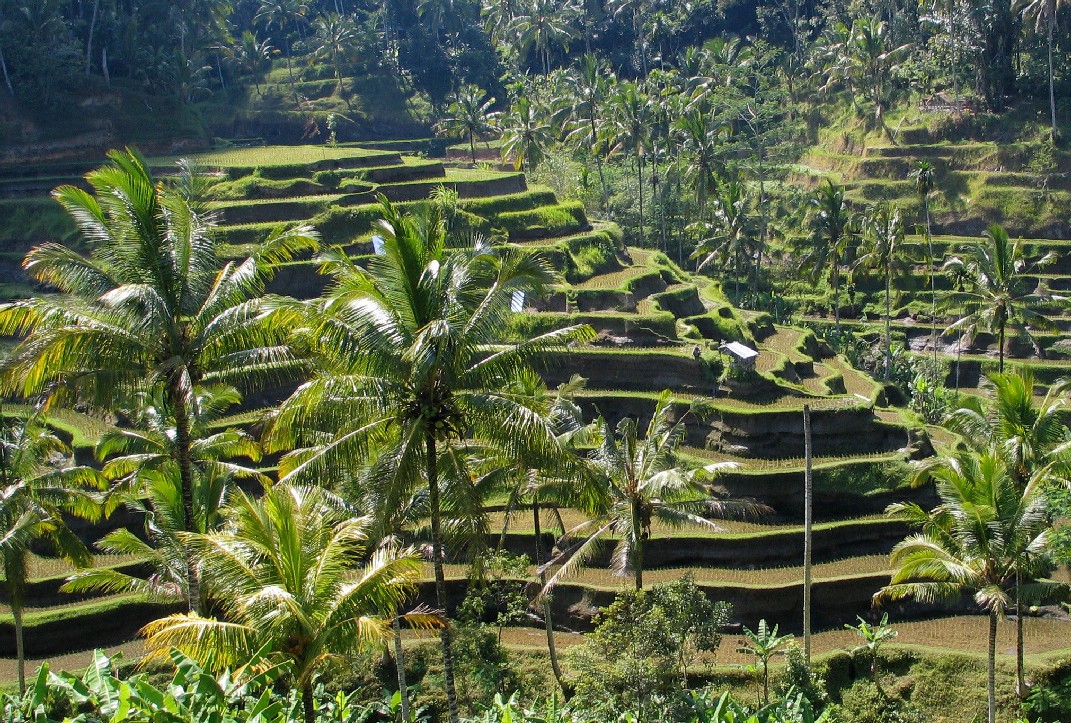|
Songket
''Songket'' or sungkit is a '' tenun'' fabric that belongs to the brocade family of textiles of Brunei, Indonesia, and Malaysia. It is hand-woven in silk or cotton, and intricately patterned with gold or silver threads. The metallic threads stand out against the background cloth to create a shimmering effect. In the weaving process the metallic threads are inserted in between the silk or cotton weft (latitudinal) threads in a technique called supplementary weft weaving technique. Songket is often associated with the Srivijaya Empire as the origin of the songket tradition, several types of popular Songket can not be separated from locations that were once under Srivijaya rule, one of the dominant locations which is also believed to be the capital of the Srivijaya Empire in the past, namely Palembang, which located in South Sumatra, Indonesia. Besides Palembang, several areas in Sumatra are also the best-in-class Songket producing locations, which include areas in Minangkabau ... [...More Info...] [...Related Items...] OR: [Wikipedia] [Google] [Baidu] |
Palembang
Palembang (, Palembang: ''Pelémbang'', Mandarin: 巨港 (Jùgǎng), Hokkien: 舊港 (Kū-káng), Jawi: ) is the capital city of the Indonesian province of South Sumatra. The city proper covers on both banks of the Musi River in the eastern lowlands of southern Sumatra. It had a population of 1,668,848 at the 2020 Census;Badan Pusat Statistik, Jakarta, 2021. the official estimate as at mid 2023 was 1,772,492 (comprising 887,101 males and 885,391 females).Badan Pusat Statistik, Jakarta, 28 February 2024, ''Kota Palembang Dalam Angka 2024'' (Katalog-BPS 1102001.1671) Palembang is the second most populous city in Sumatra, after Medan, and the twelfth most populous city in Indonesia. The Palembang metropolitan area has an estimated population of more than 2.7 million in 2023. It comprises the city and parts of regencies surrounding the city, including Banyuasin Regency (11 administrative districts), Ogan Ilir Regency (seven districts), and Ogan Komering Ilir Regency ( ... [...More Info...] [...Related Items...] OR: [Wikipedia] [Google] [Baidu] |
South Sumatra
South Sumatra () is a Provinces of Indonesia, province of Indonesia, located in the southeast of the island of Sumatra. The capital and largest city of the province is the city of Palembang. The province borders the provinces of Jambi to the north, Bengkulu to the west and Lampung to the south, as well a maritime border with the Bangka Belitung Islands to the east. It is the largest province in the island of Sumatra, and it is slightly smaller than Portugal, the department of Boquerón, Paraguay, Boquerón in Paraguay or the U.S. state of Maine. The Bangka Strait in the east separates South Sumatra and the island of Bangka Island, Bangka, which is part of the Bangka Belitung Islands province. The province has an area of and had a population of 8,467,432 at the 2020 census;Badan Pusat Statistik, Jakarta, 2021. the official estimate as at mid-2023 was 8,743,522 (comprising 4,453,902 males and 4,289,620 females).Badan Pusat Statistik, Jakarta, 28 February 2024, ''Provinsi Sumatera Sel ... [...More Info...] [...Related Items...] OR: [Wikipedia] [Google] [Baidu] |
Srivijaya
Srivijaya (), also spelled Sri Vijaya, was a Hinduism, Hindu-Buddhism, Buddhist thalassocracy, thalassocratic empire based on the island of Sumatra (in modern-day Indonesia) that influenced much of Southeast Asia. Srivijaya was an important centre for the expansion of Buddhism from the 7th to 11th century AD. Srivijaya was the first polity to dominate much of western Maritime Southeast Asia. Due to its location, Srivijaya developed complex technology utilizing maritime resources. In addition, its economy became progressively reliant on Maritime Silk Road, the booming trade in the region, thus transforming it into a luxury good, prestige goods-based economy. The earliest reference to it dates from the 7th century. A Tang dynasty Chinese people, Chinese Bhikkhu, monk, Yijing (monk), Yijing, wrote that he visited Srivijaya in 671 for six months. The earliest known inscription in which the name Srivijaya appears also dates from the 7th century in the Kedukan Bukit inscription fo ... [...More Info...] [...Related Items...] OR: [Wikipedia] [Google] [Baidu] |
Tenun
''Tenun'' is a traditional Austronesian peoples weaving technique found across Maritime Southeast Asia, deriving from a shared Proto-Austronesian root meaning ''"to weave"''. The word itself has a high meaning, historical value, and technique in terms of colors, motifs, and types of materials and threads used and each region has its own characteristics. In addition, is also one of Indonesia's original cultural heritages that is still maintained and preserved to this day. Tenun fabrics are made in various places in the Indonesian archipelago such as on the islands of Sumatra, Java, Bali and Sulawesi, where each region has its own uniqueness and characteristics in terms of motifs and colors. These differences are caused by geographical location, beliefs, customs and the surrounding natural conditions including flora and fauna, each region has certain differences and uniqueness as well as contacts or relationships between regions, from the many types of ''Tenun'', ikat and songke ... [...More Info...] [...Related Items...] OR: [Wikipedia] [Google] [Baidu] |
Minangkabau People
Minangkabau people (; ; ) are an Austronesian people, Austronesian ethnic group native to the Minangkabau Highlands of West Sumatra, Western Sumatra region on the Indonesian island of Sumatra. The Minangkabau's West Sumatera homelands was the seat of the Pagaruyung Kingdom, believed by early historians to have been the cradle of the Malay race, and the location of the Padri War (1821 to 1837). Minangkabau are the ethnic majority in West Sumatra and Negeri Sembilan. Minangkabau are also a recognised minority in other parts of Indonesia as well as Malaysia, Singapore, and the Netherlands. Etymology There are several possible etymologies for the term Minangkabau (Minangkabau language, Minangkabau: ''Minang'' Jawi script: منڠ). While the word "kabau" undisputedly translates to "buffalo", the word "minang" is traditionally known as the ''pinang'' fruit (areca nut) chewed with ''sirih'' (betel) leaves. But there is also a folklore that mention that term ''Minangkabau'' came f ... [...More Info...] [...Related Items...] OR: [Wikipedia] [Google] [Baidu] |
Bali
Bali (English:; Balinese language, Balinese: ) is a Provinces of Indonesia, province of Indonesia and the westernmost of the Lesser Sunda Islands. East of Java and west of Lombok, the province includes the island of Bali and a few smaller offshore islands, notably Nusa Penida, Nusa Lembongan, and Nusa Ceningan to the southeast. The provincial capital, Denpasar, is the List of Indonesian cities by population, most populous city in the Lesser Sunda Islands and the second-largest, after Makassar, in Eastern Indonesia. Denpasar metropolitan area is the extended metropolitan area around Denpasar. The upland town of Ubud in Greater Denpasar is considered Bali's cultural centre. The province is Indonesia's main tourist destination, with a significant rise in Tourism in Bali, tourism since the 1980s, and becoming an Indonesian area of overtourism. Tourism-related business makes up 80% of the Bali economy. Bali is the only Hinduism in Indonesia, Hindu-majority province in Indonesia, ... [...More Info...] [...Related Items...] OR: [Wikipedia] [Google] [Baidu] |
Supplementary Weave
Supplementary weaving is a decorative technique in which additional threads are woven into a textile to create an ornamental pattern in addition to the ground pattern. The supplementary weave can be of the warp or of the weft. Supplementary weave is commonly used in many of the textiles of Southeast Asia such as in Balinese textiles, the textiles of Sumba and the songket of Sumatra, Malaysia and Brunei. Supplementary of the warp weaving An additional set of threads are incorporated in the warp to create the design. Supplementary of the weft weaving An extra set of threads are woven into the weft between two regular weft threads to create an ornamental pattern in addition to the ground weave. Songket ''Songket'' or sungkit is a '' tenun'' fabric that belongs to the brocade family of textiles of Brunei, Indonesia, and Malaysia. It is hand-woven in silk or cotton, and intricately patterned with gold or silver threads. The metallic threads ... textiles are an example of supp ... [...More Info...] [...Related Items...] OR: [Wikipedia] [Google] [Baidu] |
Malaysia
Malaysia is a country in Southeast Asia. Featuring the Tanjung Piai, southernmost point of continental Eurasia, it is a federation, federal constitutional monarchy consisting of States and federal territories of Malaysia, 13 states and three federal territories, separated by the South China Sea into two regions: Peninsular Malaysia on the Mainland Southeast Asia, Indochinese Peninsula and East Malaysia on the island of Borneo. Peninsular Malaysia shares land and maritime Malaysia–Thailand border, borders with Thailand, as well as maritime borders with Singapore, Vietnam, and Indonesia; East Malaysia shares land borders with Brunei and Indonesia, and a maritime border with the Philippines and Vietnam. Kuala Lumpur is the country's national capital, List of cities and towns in Malaysia by population, largest city, and the seat of the Parliament of Malaysia, legislative branch of the Government of Malaysia, federal government, while Putrajaya is the federal administrative capi ... [...More Info...] [...Related Items...] OR: [Wikipedia] [Google] [Baidu] |
Silk
Silk is a natural fiber, natural protein fiber, some forms of which can be weaving, woven into textiles. The protein fiber of silk is composed mainly of fibroin and is most commonly produced by certain insect larvae to form cocoon (silk), cocoons. The best-known silk is obtained from the cocoons of the larvae of the mulberry silkworm ''Bombyx mori'' reared in captivity (sericulture). The shimmering appearance of silk is due to the triangular Prism (optics), prism-like structure of the silk fibre, which allows silk cloth to refract incoming light at different angles, thus producing different colors. Harvested silk is produced by several insects; but, generally, only the silk of various moth caterpillars has been used for textile manufacturing. There has been some research into other types of silk, which differ at the molecular level. Silk is mainly produced by the larvae of insects undergoing holometabolism, complete metamorphosis, but some insects, such as webspinners and Gr ... [...More Info...] [...Related Items...] OR: [Wikipedia] [Google] [Baidu] |
Indonesia
Indonesia, officially the Republic of Indonesia, is a country in Southeast Asia and Oceania, between the Indian Ocean, Indian and Pacific Ocean, Pacific oceans. Comprising over List of islands of Indonesia, 17,000 islands, including Sumatra, Java, Sulawesi, and parts of Borneo and New Guinea, Indonesia is the world's largest archipelagic state and the List of countries and dependencies by area, 14th-largest country by area, at . With over 280 million people, Indonesia is the world's List of countries and dependencies by population, fourth-most-populous country and the most populous Islam by country, Muslim-majority country. Java, the world's List of islands by population, most populous island, is home to more than half of the country's population. Indonesia operates as a Presidential system, presidential republic with an elected People's Consultative Assembly, legislature and consists of Provinces of Indonesia, 38 provinces, nine of which have Autonomous administrative divisi ... [...More Info...] [...Related Items...] OR: [Wikipedia] [Google] [Baidu] |
Unesco Cultural Heritage Logo
The United Nations Educational, Scientific and Cultural Organization (UNESCO ) is a specialized agency of the United Nations (UN) with the aim of promoting world peace and security through international cooperation in education, arts, sciences and culture. It has 194 member states and 12 associate members, as well as partners in the non-governmental, intergovernmental and private sector. Headquartered in Paris, France, UNESCO has 53 regional field offices and 199 national commissions. UNESCO was founded in 1945 as the successor to the League of Nations' International Committee on Intellectual Cooperation.English summary). UNESCO's founding mission, which was shaped by the events of World War II, is to advance peace, sustainable development and human rights by facilitating collaboration and dialogue among nations. It pursues this objective through five major programme areas: education, natural sciences, social/human sciences, culture and communication/information. UNESCO spons ... [...More Info...] [...Related Items...] OR: [Wikipedia] [Google] [Baidu] |





